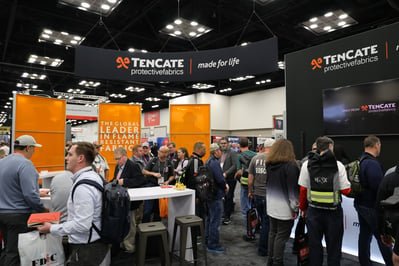Firefighters risk their lives in dangerous situations every day—so it is essential that their fire gear is equipped with the very best protective technology. But fire gear can also come with some sticker shock. So how do you balance protection with affordability?
Total Cost of Ownership
With high ticket items like fire gear, you have to look beyond the initial price tag and consider the total cost of ownership. What will purchasing particular fire gear mean for you in the long term? Investing in durability will ultimately lower your costs in the long term, saving you repurchasing costs until the end of that fire gear's lifecycle—ideally 5-10 years.
Making Your Purchase Go the Distance
We know that protection is the priority when selecting fire gear. But how does protection go hand in hand with total cost of ownership? Keep these factors in mind to analyze the long term costs of purchasing fire gear:
- Maintenance
Beyond the initial purchase, how much will it cost to maintain and repair the gear to ensure safety standards compliance for as long as possible? What systems do you have in place to maintain and clean gear? Some manufacturers and industrial laundries offer maintenance and repair programs that maximize the lifespan of protective garments like fire gear. Check your care and maintenance options with your manufacturer during the purchasing process to ensure you understand the total cost of the fire gear, including maintenance. - Colorfastness
How well will the garment hold up to repeated washing in the heavy duty machines of industrial laundering? This will play a large part in the overall durability and lifecycle of your garment. Consider how well the fire suit will maintain its shape, looks, and function after repeated washing. - Dual Certification
Dual certified gear can be used in more than one type of setting, e.g. stationwear that can be worn in wildland fires. Having dual certified garments can reduce costs by making it possible to wear the same garment in different applications instead of buying all new sets of gear for every separate situation. But make sure whatever garment solutions you choose are being worn for the right applications. Wearing the wrong garment can increase costs by wearing out or destroying garments before the end of their lifecycle because they weren’t meant for the environments in which they were worn. - Range of Protection
What is the garment able to withstand? Fire gear protection has long been primarily about protection from fire. But now there is a growing awareness of other levels of protection the wearer may need. Exposure to particulates, carcinogens, and chemicals are additional factors to consider in choosing fire gear with the range of protection you require. Does your fire gear offer the full range of protection, prioritizing both the safety of the wearer and the overall lifecycle of the garment?
The Challenges of This Economic Climate
It’s no secret that everything is more expensive these days—including PPE. Being cost conscious while purchasing much needed protective equipment is especially challenging, but we simply can’t compromise on safety. It’s more important than ever that the fire gear you buy is built to last—you can’t afford to waste budget spend on garments that won’t stand up to the rigors of the job. Buy better materials with longer lifespans and the greatest range of protection and you’re sure to save money in the long run by significantly reducing replacement costs.
Looking for Advice on Your Options?
We are more than happy to speak with you about your fire gear options and answer any questions you may have. Get in touch with us today.







